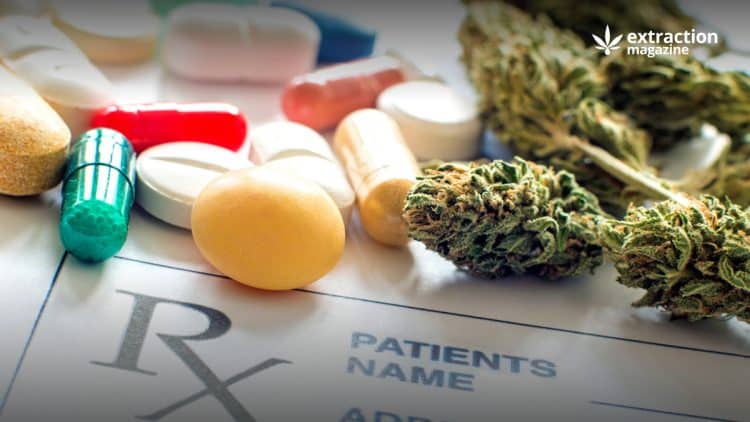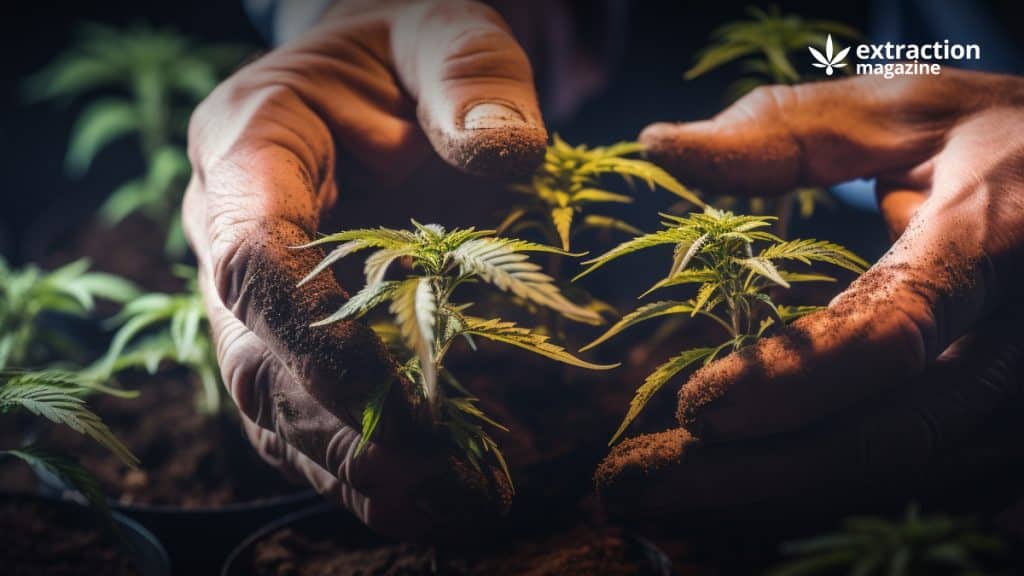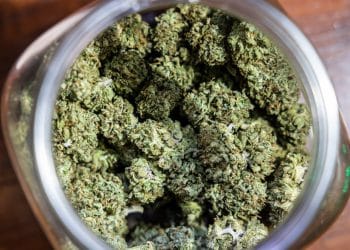Patients considering cannabis as a therapeutic option must understand the potential for drug interactions. Cannabis, like any other medication, has the capacity to influence how the body processes certain pharmaceuticals. This interaction can alter the effectiveness of medications and may lead to unexpected side effects. It’s imperative for individuals to consult healthcare providers about their current medications before cannabis drug interactions into their treatment plan, ensuring safety and efficacy in managing their health concerns.
Mechanisms of Cannabis Drug Interactions with Medications
Cannabinoids can affect how the body processes medications. They may inhibit or activate enzymes known as cytochrome P450. These enzymes are crucial for metabolizing many drugs. When cannabinoids interact with these enzymes, they can change the way medications work in the body.
For example, if a cannabinoid inhibits an enzyme that breaks down a medication, it could lead to higher levels of that medication in the blood. This can increase the risk of side effects or toxicity. Conversely, if a cannabinoid activates an enzyme, it might cause lower drug levels and reduce effectiveness. Another interaction involves competition at protein binding sites. Many drugs bind to proteins in the blood before reaching their target sites in the body. If cannabinoids also bind to these proteins, there is less room for other drugs which can result in more free drug being present and potentially causing harm.
Lastly, cannabinoids may modulate drug transporters within the body. These transporters help move substances across cell membranes. If cannabinoids alter transporter function, they could change how well other drugs are absorbed, distributed or eliminated from the body. Patients should be aware of potential pharmacokinetic interactions when using cannabis drug interactions products alongside other medications:
-
Inhibition or activation by cannabinoids affects metabolism;
-
Competition between cannabinoids and medications alters drug availability;
-
Modulation by cannabinoids impacts drug movement within the body.
Understanding these mechanisms helps patients and healthcare providers manage risks associated with drug interactions involving cannabis.
Common Medications with Potential Cannabinoid Interactions
Patients taking blood thinners like warfarin should be cautious. Cannabis can alter the drug’s efficacy. This interaction may increase bleeding risks or decrease anticoagulant effects. Healthcare providers often monitor blood levels when patients use both substances.
Concurrent cannabis consumption impacts antiepileptic drugs as well. It affects their levels in the bloodstream, which could lead to either reduced effectiveness or increased toxicity of these medications. Patients must consult healthcare professionals before combining these treatments. The combination of cannabis drug interactions with benzodiazepines or opioids is especially concerning due to heightened sedation risks. These prescription medications already depress the central nervous system; adding cannabis can amplify this effect significantly.
It is crucial for patients on any prescribed medication to communicate openly with their healthcare provider about all substance use, including cannabis.
Effects of Cannabis on Drug Metabolism and Clearance
Cannabis can alter how the body processes medications. It may slow down drug metabolism, leading to longer-lasting effects. This is particularly important for drugs that require precise dosing to be effective or safe. The liver, which plays a crucial role in breaking down substances, contains enzymes such as CYP3A4 that metabolize many medications. When cannabis is consumed, it can inhibit these enzymes.
Patients taking medication metabolized by CYP3A4 might experience higher levels of these drugs in their system when also using cannabis. For example, if they use sedatives or pain relievers with this interaction, they could feel stronger or more prolonged effects than expected. This underscores the importance of healthcare providers closely monitoring patients who consume cannabis drug interactions while on other medications.
Conversely, certain drugs may clear from the system quicker than usual when a patient uses cannabis. This reduction in effectiveness means some medications might not work as intended. Patients could find their treatment less effective and may need a dosage adjustment to achieve therapeutic benefits.
To ensure safety and efficacy of treatment plans, healthcare providers must consider potential changes in drug clearance due to cannabis drug interactions use. They should recalibrate dosages accordingly for those whose medications are affected by cannabinoid interactions—especially those processed by liver enzymes like CYP3A4.
Additive Effects of Cannabinoids and Concomitant Drugs
Patients combining cannabis with central nervous system (CNS) depressants may experience heightened drowsiness. CNS depressants slow down brain activity, leading to sedation or relaxation. When taken with cannabis drug interactions, the sedative effects can be amplified. This means patients might feel more tired than usual or struggle to stay awake. It’s crucial for individuals on such medications to understand this risk.
Taking cannabis alongside nonsteroidal anti-inflammatory drugs (NSAIDs) or anticoagulants also poses risks. These substances can increase the likelihood of bleeding. Cannabis affects how platelets work in the body, potentially enhancing the blood-thinning properties of these medications. Patients should monitor for any signs of unusual bruising or bleeding.
The addition of cannabis to a regimen including antihypertensive medications could lead to compounded hypotensive effects—lowering blood pressure too much. Antihypertensives are designed to decrease blood pressure; when used with cannabinoids, they might cause it to drop suddenly and dangerously low.
Red Flag Interactions with Cannabis to Watch Out For
Patients using stimulant medications must be cautious. Cannabis can trigger severe cardiovascular responses in this combination. Stimulants increase heart rate and blood pressure. When mixed with cannabis, the effects may multiply, posing significant risks. For those on high opioid doses, adding cannabis could lead to life-threatening respiratory depression. Opioids slow breathing on their own. Combined with cannabis, the risk of severely reduced respiratory function increases.
There is also a concern for patients taking SSRIs, a type of antidepressant medication. High THC strains of cannabis drug interactions may raise serotonin levels too much when used alongside these drugs. This can cause serotonin syndrome, which is potentially fatal if not treated promptly.
 Sedatives and Cannabis
Sedatives and Cannabis
Cannabis is often used as a natural sleep-aid by both medicinal and recreational users. CBD holds promise in treating insomnia, but THC, in large doses, has the potential to limit REM quality. Since cannabinoids can influence sleep in different ways, how do they interact with other drugs designed for sedation? One 2019 study found that anesthetics doses required for endoscopic surgery were “significantly higher” for regular cannabis users than for non-users. This study is not definitive, but it does imply an overlap between cannabinoids and sedatives. Those who use cannabis for other reasons besides sleep may find that the sedatives they use slowly become less affective. This means they may have to up the dosage in the future.
For individuals who combine cannabis drug interactions and sedatives, the risks may be even more dire. If cannabis is used in tandem with medications like Ambien, Lunestra, and Benadryl, the effect can combine into an overwhelming sedation that could result in serious health risks like heart failure or asphyxiation.
Cannabis and Anxiety Medication
In a similar vein to sedatives, cannabis has also been touted as an alternative to antianxiety medication like Xanax or Valium. While the science is still developing, the research indicates that CBD may relieve anxiety, while THC, in large doses, may exacerbate it. Cannabinoid ratios impact the interaction with anxiety meds, adding ambiguity to strain effects. THC-rich strains may increase paranoia and anxiety, requiring higher doses of anti-anxiety medication.CBD heavy strains may supplement the medication, causing users to take less. To a lesser extent, anti-anxiety medications also can have a sedative effect. Combining them with cannabis drug interactions may be similar to sedatives.
Pain Medication and Opioids
There is some early evidence that cannabis may serve as a useful replacement in dealing with opioid addiction. This is because cannabis not only has the potential to ease withdrawal symptoms, but has also been shown to be beneficial in replacing opioids for pain relief as well. In one proven area of pain management, cannabis has been shown to be effective in treating neuropathic pain, making it a valuable alternative to other pain medications like Percocet, codeine, Vicodin in addition to opioids. This does present an additional risk, though, as the combination of these medications with cannabis leads to a magnification of both. Cannabis is not lethal, but combining it with opioids can have disastrous consequences.
Anticoagulants and Anticonvulsants
THC and CBD interact similarly with prescription drugs despite differing functions in the body. In the case of anticonvulsants, which treat seizures, one study found that CBD can reduce serum levels of various antiepileptic drugs within the blood stream. In the case of anticoagulants, or blood thinners, THC has been demonstrated to limit warfarin absorption of various medications. This means that in both cases, cannabinoids limit the effectiveness of each medication in quantifiable ways. The risk here is that both of these drugs can influence not only quality of life, but also safety. Additional risks of blood clots or seizures can be very dangerous. Cannabis drug interactions may reduce the effectiveness of certain medications, requiring higher doses to be effective.
Antidepressants With Cannabinoids
Antidepressants treat mental and emotional disorders, but they could also induce strong physical side effects. Both THC and CBD can affect selective serotonin reuptake inhibitors (SSRI), which can help regulating mood and happiness. Combined with antidepressants, may increase physical risks like cough, influenza, dizziness, palpitations, panic attacks, and even hallucinations. hallucinations. Some of these side effects may be minor, but with heart palpitations and panic attacks the risks are apparent. Depression is a serious condition to treat, and cannabis use may worsen depression and increase associated risks.
Cannabis Risks for Diabetics
While the data is limited, there is some evidence that suggests cannabinoids could interfere with insulin in certain diabetic patients. For type 1 diabetic patients, there is evidence that cannabis drug interactions can cause ketoacidosis in certain individuals. Additional studies indicate that cannabis increases the risk of peripheral arterial occlusion and myocardial infarction for those with type 2 diabetes. Cannabis and glycemic levels may be linked in diabetic patients, but the cause and effects are unclear. It may also be due to some corollary effect of cannabis use as well.
Reference:
The Impact of Marijuana on Antidepressant Treatment in Adolescents: Clinical and Pharmacologic Considerations
Interactions between cannabidiol and commonly usedantiepileptic drugs
Medical Cannabis for Neuropathic Pain
Should Physicians Recommend Replacing Opioids With Cannabis?

 Sedatives and Cannabis
Sedatives and Cannabis










